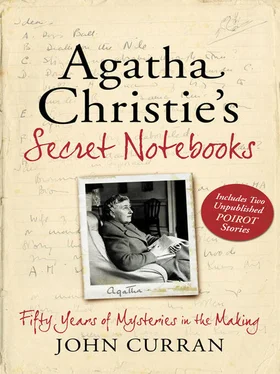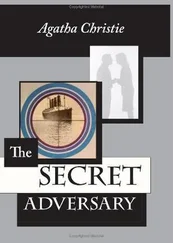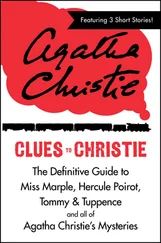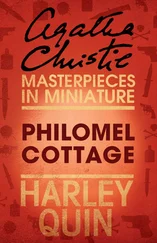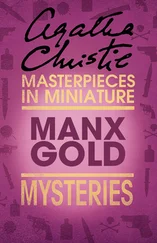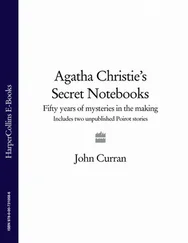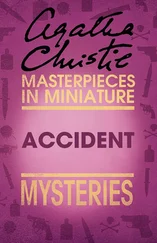But there is a further problem, also of a practical nature—how could Nurse Hopkins have known that Elinor would call herself and Mary from the Lodge to the house for the fatal lunch? And how did she have a hypodermic and apomorphine with her? Her original plan to poison Mary in her own (Hopkins’) cottage, as surmised by Poirot in the final chapter, does not answer the question either, as that scenario, even if it were to include Elinor, would be so unlikely as to be suspicious. Unfortunately the Notebooks give no indication as to whether Christie considered this difficulty.
The aftermath of the murder is also accurately reflected in Notebook 21, with little deviation from the finished novel:
Death of old lady—no will—her fortune goes to Elinor as next of kin
E and Roger—a little stiffness—she says it doesn’t matter which of us has it—he again feels there is a coolness between them.
R. and Mary—incipient love affair—she is pleased—Mary’s young man Edmund is angry—they quarrel
Elinor sees them together—R. is ringing her
Elinor gives Mary £1000 pounds—she accepts
And ultimately…
Dr. Lord comes to Poirot—insists it wasn’t her—can’t be Hopkins she had nothing to do with sandwiches—just made tea which they both drank—little bit of paper with morphine under the stove—the kitchen—it was open—someone could have got in there while the others were down in the Lodge
The Moving Finger
14 June 1943
The Moving Finger writes; and, having writ moves on
The Rubaiyat of Omar Khayyam
Shortly after Jerry Burton and his sister move to the idyllic village of Lymstock, a series of anonymous letters horrifies the inhabitants and culminates in the death of the local solicitor’s wife. The vicar’s wife decides to send for an expert in wickedness—Miss Marple.
This is another example of a novel narrated by a male. Apart from the Hastings novels, seven other titles ( The Murder of Roger Ackroyd, The Murder at the Vicarage, The Moving Finger, Crooked House, Endless Night; and both The Pale Horse and The Clocks are partly male-narrated) have male narrators while only two ( Murder in Mesopotamia and, for the most part, The Man in the Brown Suit ) have female ones. While it is by no means extraordinary for a female writer to write as a male, this may have been dictated from the beginning of Christie’s career when, having created Hastings as Poirot’s chronicler, she grew accustomed to the idea of telling the story as a male. It would have been inconceivable for Poirot to have a close female friend with whom he lived and shared his cases. And equally inconceivable, but for different reasons, is the possibility that they would be recounted by his wife! In The Moving Finger it is also odd that Jerry Burton narrates the entire story without ever telling us anything about his background or that of his sister. Apart from the fact that he was a pilot and that Joanna has a busy social life we learn nothing about them.
Not only was The Moving Finger published almost a year earlier in the USA but the US and UK editions are significantly different, although this did not come to light until the mid-1950s. When Penguin Books published the title in 1953 a flurry of correspondence drew Edmund Cork’s attention to these discrepancies. He had supplied Penguin with a US edition for their reprint, as the agent’s own file copy of the UK edition had been a war casualty. When he contacted Christie’s US agent in July 1953 seeking an explanation of the inconsistencies it was difficult, even then, to say how the mistake happened. The most likely explanation, according to them, was that the US publishers had worked from a copy used by the publishers of the serial, Colliers Magazine, who had ‘cut’ the manuscript. The mistake has been perpetuated ever since. While the basic story remains the same, many minor characters have disappeared from the US edition and some passages, including the opening scene, are significantly different. Apart from puzzling references to characters who do not (seemingly) exist the overall effect is to leave the US edition a shorter book.
The same situation, and probable explanation, applies to Murder is Easy.
Miss Marple was indicated as the detective from the beginning, which makes her non-appearance until Chapter 10 (of the UK edition) all the more peculiar. It is almost a cameo appearance, less than a dozen pages. The setting, however, is very much Miss Marple territory and Lymstock is the typical English village associated with Agatha Christie. Apart from St Mary Mead the number of similar villages in Christie novels is actually surprisingly small, despite the common perception that they are all set in such surroundings.
The Moving Finger also has the most unusual denouement of any Christie novel. We learn who the killer is before Miss Marple’s explanation. The ploy to trap the murderer is known to the reader as we watch him attempt another killing. This is at variance with similar ruses in, for example, The Body in the Library, Cards on the Table and Towards Zero, where the reader is unaware of the identity of the victim of the trap.
There are only 15 pages of Notebook devoted to The Moving Finger and, apart from a few fleeting references elsewhere, most of these pages are in Notebook 62. It does not seem to have presented many technical problems and the plotting progresses smoothly. And she follows her (then) normal pattern of assigning letters to scenes.
The initial appearance is dated, although not very precisely, 1940:
Ideas (1940)
Poison pen—letters in village—‘repressed spinster’ indicated—really plot by someone to discredit her—(a resourceful mother?) Miss Marple
Although the ‘repressed spinster’ as the source of the anonymous letters is much discussed in Lymstock as, indeed, the killer hoped, the ‘discrediting’ idea was abandoned; perhaps it had too many echoes of the recent Murder is Easy, where the killer hoped that the murders would discredit the real target, a person with a strong motives for removing all of the victims.
Christie began work on the novel the following year, as shown by a subsequent note, and the general set-up closely follows Notebook 62. In a typical piece of Christie misdirection, she uses the minor crime of anonymous letters as camouflage for the more deadly crime of murder. This is the same principle of camouflage adopted by the killer in The A.B.C. Murders, although in that novel a series of murders is used to camouflage one particular killing. The town, the people and their names, the events and the first murder all appear in the book as they do in the Notebook:
Anonymous letters—deliberate—finally woman commits suicide as a result of letter—really killed (by husband?)
Books 1941 Miss M? or told in 1st person
Poison Pen—all round village—unhappiness etc.—wife of lawyer (?) gets one—kills herself—really is killed by husband—and he then puts letter in her pocket—its subject matter is untrue
Suspected of writing letters—Vicar’s sister? wife—schoolmistress—doctor’s wife sister?—Hearty spinster—maidservant—maidservant is next killed because she saw something or knew something
Description of town—market town known better days—they take bungalow—the letters come—not sister—wonders if there is much of this sort of thing about—what about if a shot in the dark hits the bulls eye?
Resume of people they meet
Dr. Thomas—his sister—dark fierce ‘manly looking’ woman—little Mr Pye—Vicar—his wife—goes home to find Mrs. Symmington calling
Читать дальше
Конец ознакомительного отрывка
Купить книгу
